Pichardo on her journey to baseball team
BY LINUS LAWRENCE SENIOR STAFF WRITER


On Oct. 4, Olivia Pichardo ’26 walked into the Paul K. Sloan ’97 Football Team Room in the Berylson Family Football Complex for what she thought was a standard hitters and pitchers meeting.
Instead, she was informed that she had made the Brown baseball team after trying out as a walk-on, becoming the first woman ever to earn a spot on a Division I baseball roster.
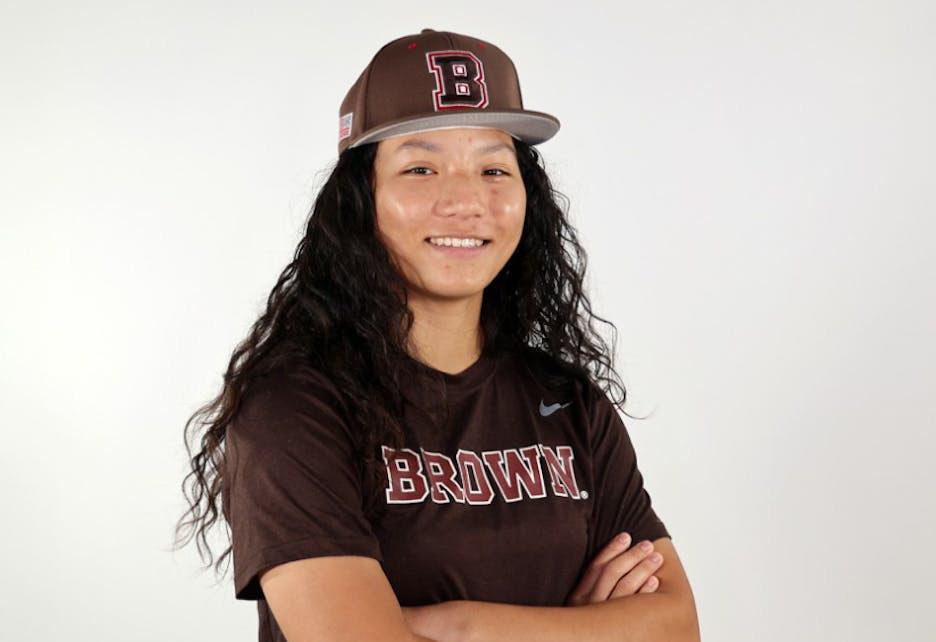

“I was not expecting that at all,” Pichardo said. “It was a complete surprise.”
The University announced the his toric news in a press release on Nov. 21. Pichardo’s accomplishment spread across social media and received cov erage by outlets such as ESPN, Sports Illustrated and MLB.com.
“I keep finding out from my friends that I’m on all of these different news channels,” Pichardo said. “I honestly didn’t expect it to blow up this fast and at this level.”
‘I always knew that it was gonna be baseball’
Pichardo’s baseball journey began at age five, when her dad signed her up for the Forest Hills Youth Base
SCIENCE & RESEARCH
U., Lifespan, Care New England to align research
The new agreement does not con stitute a merger and is not subject to federal or state merger regulations, according to the release. But the ARC will “streamline operations” between the three institutions and “strategically align research priorities,” the release read.
ball League in her hometown Queens, N.Y. From there, Pichardo continued playing baseball at higher levels of competition, joining the varsity base ball team at her high school, Garden School, in seventh grade.
Pichardo never seriously consid ered playing softball instead. “Every time I got to the next level, parents
UNIVERSITY NEWS
Deborah Spears Moorehead talks artistry, Indigeneity
Artist-in-residence,
BY MIRA WHITE
CONTRIBUTING WRITER
Growing up in Warwick, Deborah Spears Moorehead only knew one Indigenous family in the city other than her own.
A member of the Seaconke Po kanoket Wampanoag Tribal Nation, she wrote in an email to The Herald that she distinctly remembers feeling curious about her ancestors who first made their home in Warwick.
“I was obsessed with finding out what happened to my ancestors,” she wrote. “As soon as I started asking ques tions, my grandmother … (handed) me a pencil and paper and (told) me to draw everything in sight.”
Spears Moorehead — whose web site describes her as a painter, sculptor and Native American consultant and
historian — credits her career as an artist and activist to her upbringing and connection to her ancestry. Her work aims to “educate, assert, promote, value and validate the identity of the past, present and future generation of Eastern Woodland Tribal Nations,” according to her website.
Spears Moorehead is also one of two Rhode Island-based artists-in-res idence in the University’s “Les Vues d’Amérique du Nord: Artists Respond” artist residency program that responds to a racist mural on display in the Nightingale-Brown House. Her work, a mural exhibit titled “Perceptions of Organizational Change, through a Kaleidoscopic Lexicon of Color,” was unveiled in October and will remain on display in the Nightingale-Brown House through late December.
Highlighting cultural heritage through
art
Much of Spears Moorehead’s work has roots in an effort to shine a light on her culture’s heritage, she wrote — but
SPORTS
Men’s basketball defeats UMaine 70-63
BY JARED ZHANG SENIOR STAFF WRITER
The University signed an agreement with Lifespan and Care New England to coordinate the institutions’ health and medical research operations, according to a Nov. 15 University press release.
The collaboration, established by an aligned research collaboration agree ment, brings the research operations of the two hospital systems into align ment with Brown’s Division of Biology and Medicine and the School of Public Health, allowing for greater coordi nation among the three institutions about overlapping research and funding opportunities.
In February, Lifespan and CNE withdrew a merger application that would have also established an academ ic health system in partnership with the University, The Herald previously reported.
Currently, all three nonprofits in dependently conduct research. That research aims to provide new oppor tunities for clinical trials improving access to cutting-edge therapies in Rhode Island and beyond, wrote Kath leen Hart, Lifespan’s director of public relations, in an email to The Herald.
Benefits of the agreement will also include reduced administrative burdens and improving the research experienc es of faculty and trainees, wrote Dean of Medicine and Biological Sciences Mukesh Jain in an email to The Herald.
Those administrative burdens have hindered research at each institution, according to Jain. If a hospital re searcher received a grant and wanted to work with a “basic science research er” at Brown, that researcher had to go through a subcontracting process “that
Arts & Culture
Review: Season six of ‘Elite’ fails to add life to Netflix series
Arts & Culture
Review: Netflix’s ‘1899’ enthralls audiences with twists, turns
BY ABE WYETT CONTRIBUTING WRITER

The Brown Bears (2-4) won at home against the Maine Black Bears (4-2) Sunday afternoon, spearheaded by a standout performance from Kino Lilly Jr. ’25, who scored a career-high 32 points.
After beginning the season 0-3, Bruno has won two of their last three games to improve their record to 2-4, including their third straight victory against Maine since 2016. With this win, Brown retained its spot at sixth in the Ivy League basketball stand ings, ranking above Columbia and Dartmouth.
Lilly Jr., Kalu Anya ’26, Nana Ow usu-Anane ’25, Aaron Cooley ’25 and Paxson Wojcik ’23 started the game for Brown. Dan Friday ’24, one of four captains, was listed as out.
Owusu-Anane won the opening tip-off to begin the game. The Bears’ offense came prepared, opening the
Editorial: Students deserve a campus with adequate lighting
game with Anya scoring in the post and Lilly Jr. recording an and-one bucket, giving the Bears a 5-0 lead. Brown led 14-12 with 13:46 re maining in the first half. A chasedown block by Owusu-Anane followed by consecutive three-pointers by Lilly expanded Brown’s lead to 20-12. De spite a subsequent 5-0 run by Maine, a putback by Anya and a three-pointer by Malachi Ndur ’24 gave Bruno a 2519 lead at the middle of the first half.
With the Bears holding a narrow advantage with one minute left in the first half, Lilly Jr. stole the ball at half
court and handed it to Anya, who left it underneath for an Owusu-Anane dunk. By halftime, Brown held a 38-34 edge over the Black Bears.
Lilly Jr. provided the first half’s key boost, scoring 15 points and col lecting three rebounds. Owusu-Anane also shined, tallying six points, three assists and five rebounds, with one block and a steal. Brown shot 14-31 from the field and 6-16 from distance. Playing clean defense, the Bears held Maine to only two free throws in the
Metro
Roundup: Shelter beds, internet, bishop of the Catholic Diocese
BROWN DAILY HERALD BROWNDAILYHERALD.COM SINCE 1891 MONDAY, NOVEMBER 28, 2022 VOLUME CLVII, ISSUE 70
THE
Page
8
Page 3
Page
4
TODAY TOMORROW
Commentary 54 / 39 44 / 30
Page
3
DESIGNED BY ASHLEY GUO ’24 DESIGNER MADDY CHERR DESIGN EDITOR GRAY MARTENS ’25 DESIGN EDITOR
Agreement aims to lift administrative burdens, create space for larger funding opportunities
Bruno’s record improves to 2-4 with career-high scoring by Kino Lilly Jr. ’25
COURTESY OF EMMA MARION / BROWN ATHLETICS
SEE RESEARCH PAGE 6
Brown will play the first of four consecutive away games with a matchup against Central Connecticut State tomorrow at 7 p.m.
SEE BASKETBALL PAGE 2 SEE INSTALLATION PAGE 2
activist creates installation at John Nicholas Brown Center
SPORTS
Olivia Pichardo ’26 reflects on position as first woman on D1 baseball roster
COURTESY OF EMMA MARION / BROWN ATHLETICS
Olivia Pichardo ’26 is the first woman to play on an NCAA Division I varsity baseball roster, announced by the University Nov. 21.
SEE PICHARDO PAGE 7
also her family’s artistic tendencies. She recalled watching her mother doodling as she spoke on the phone and being “amazed” by the “fluidity in all the lines of her expressions.”
As a professional artist, Spears Moorehead uses her family’s creative traditions to make art that advocates for social and environmental justice while reflecting the cultural heritage of Eastern Woodland Native Americans, she wrote. Activism, she explained, is “innate” to her personhood and art.
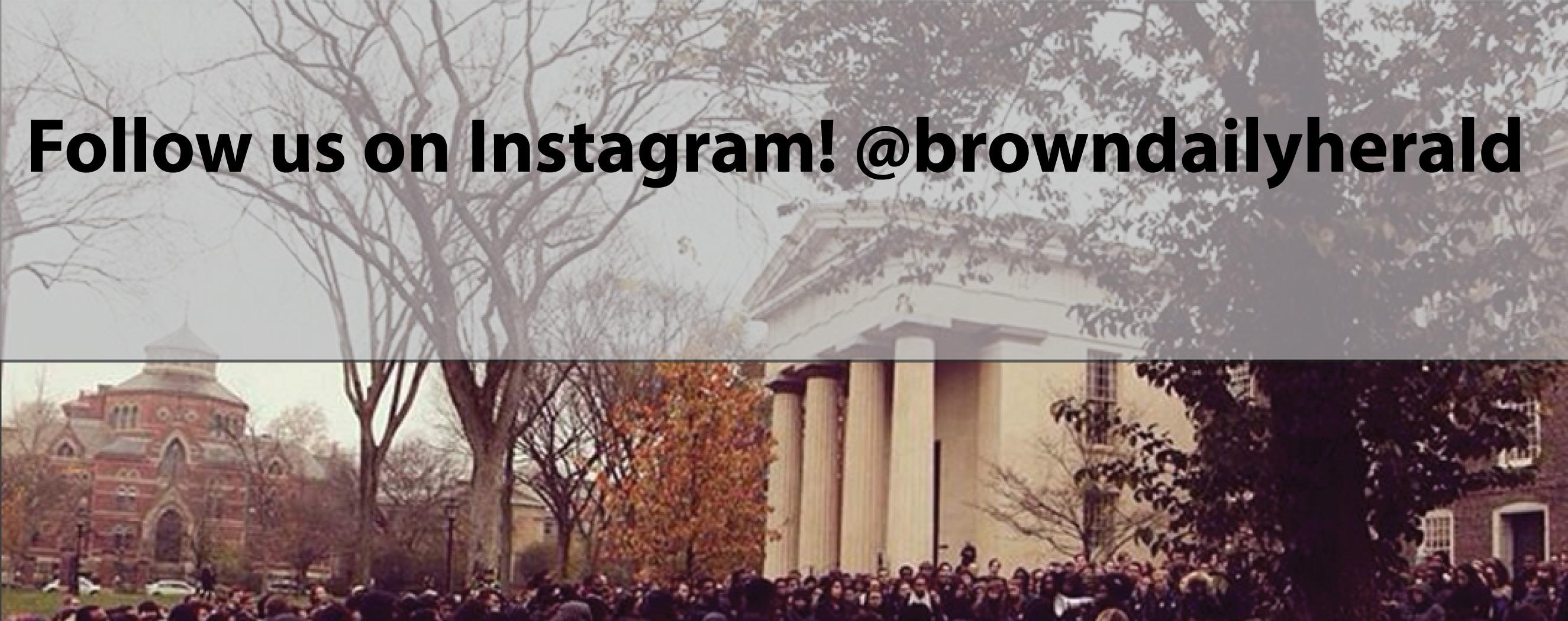
“The mission of my art is to as sert my people’s presence in our homeland, since time immemorial to the present day,” Spears Moore head wrote. “All my creative work is homeland-based and every piece has a unique story.”
Currently, Spears Moorehead is the owner and director of Painted Arrow Studio, Talking Water Productions, where she teaches about her heritage and curates creative work that aims to present the beauty of Indigenous people, she wrote.
Spears Moorehead’s own art pri marily focuses on the “contemporary existence of Eastern Woodland Native American communities and cultural sustainability,” she wrote, with the goal of promoting awareness and dialogue about social and economic inequality.
Some of Spears Moorehead’s favor ite works that she has created include portraits derived from conversations about resistance and survival. Her own relatives and individuals from Indige nous communities often visit her stu dio and talk about “what our ancestors had to overcome,” which often inspires portraits of the people she speaks with, she wrote.
Her mission of asserting her cultural heritage also extends to other medi ums; Spears Moorehead co-founded the Nettukkusqk Singers, a group that aims to teach Eastern Woodland Native
American women traditional women’s music lost because of colonization. And through her work as an author and con sultant, she researches the obscured histories of Indigenous people, she added.
‘Teaching through love’: Covering racist wallpaper
In the central hallway of the Night ingale-Brown House, home to the John Nicholas Brown Center for Public Hu manities and Cultural Heritage, the walls are adorned with wallpaper titled “Les Vues d’Amérique du Nord,” print ed in 1834 and installed in the 1920s, according to the residency’s website.
Several panels display “exoticized Indigenous dancers performing for a group of … white onlookers,” as well as a depiction of Black people in con versation based on a racist caricature, the website reads. In May 2019, public humanities graduate students wrote a letter calling for the wallpaper’s re moval.
The wallpaper is “controversial and complicated in its meanings,” said Di etrich Neumann, director of the John Nicholas Brown Center. In their let ter, the graduate students explicitly described the depictions of Black and Native Americans as racist.
In February 2020, Susan Smulyan, director of the center at the time, out lined steps the center planned to take to contextualize the wallpaper, noting the potential for commissioned artwork that would “reimagine” the wallpaper.
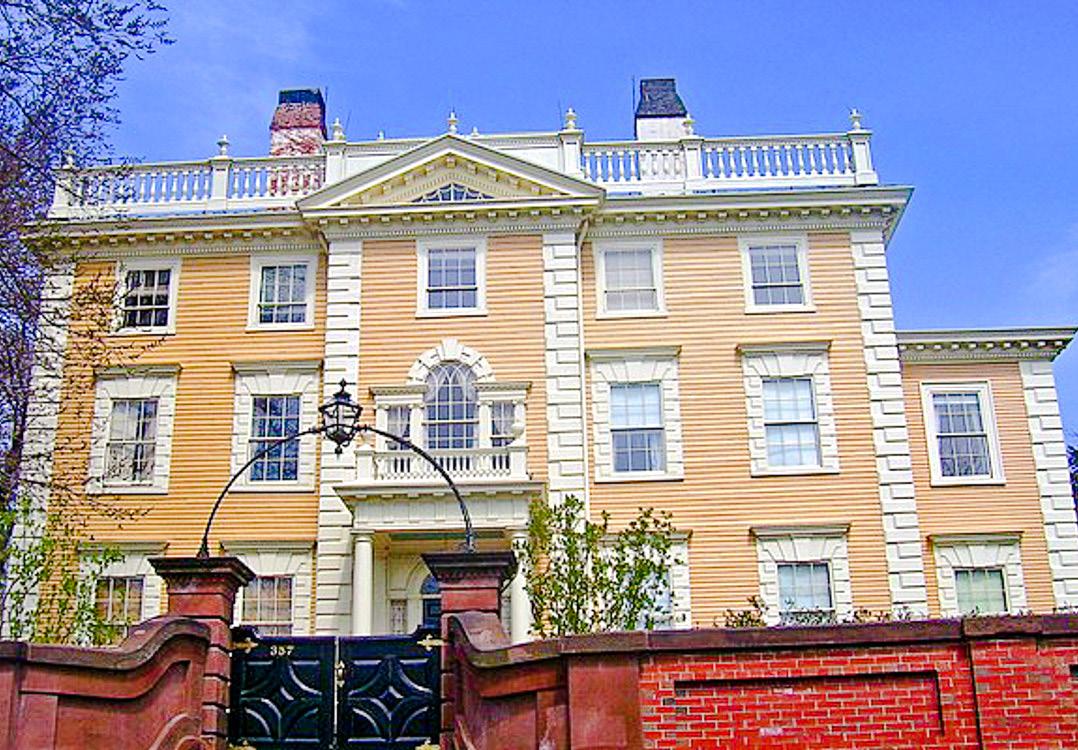
Beginning in fall 2021, Neumann worked alongside Marisa Brown, asso ciate director of the Center for Com plexity at the Rhode Island School of Design, to establish an artist residency to “give contemporary artists an oppor tunity to respond to the wallpaper with their own views about North America,” Brown said.
When Spears Moorehead applied to the residency, her profile stuck out, Neumann explained. Among the appli cant pool, “Deborah seemed to be the
one that could respond most evoca tively to the problem (of the wallpaper) through her passion,” Neumann said.
“In my first experience viewing the wallpaper, … I couldn’t believe my eyes,” Spears Moorehead wrote. “I couldn’t believe that anyone could tol erate looking at these images.”
Spears Moorehead’s residency resulted in a mural exhibit, “Per ceptions of Organizational Change,” which obscures the original wallpa per. The exhibit will remain open until Dec. 22.
The mural includes four large panels titled “Return What is Not Yours,” “I Can’t Breathe, No Justice No Peace,” “The Radical Brave Who
Dismantle Systems of Colonization” and “Authentic Realities of Truth,” she wrote. The panels replaced the previous covering of the wallpaper — silk prints created by Jazzmen Lee-Johnson MA’15, the other artist in residence.
Through the mural, Spears Moore head aims to dispel negative stereo types that surround Native Americans and Indigenous Peoples, she wrote.
“I spent a long time trying to figure out why anyone would want that wall paper in their home,” Spears Moorehead wrote in reference to the family of John Nicholas Brown, who previously owned and decorated the house.
Spears Moorehead’s previous expe
rience with teaching and creating art informed her approach to responding to the wallpaper. She decided to use her art to “communicate through the opposite avenue of racism and hatred.”
“I chose to teach through love,” Spears Moorehead wrote. In her pan els, she “decided to portray … the many people throughout history who have made radical social changes that have made the world a better place.”
“I hope that (the) people who view my mural take away a realization that there is a multitude of incredible hu man beings who would give up their own lives and, through their tenacity, make changes for the betterment of all,” she wrote.
game’s first 20 minutes.
Owusu-Anane posted the second half’s first two points off an assist from Cooley. After back-and-forth play, Brown led Maine 47-44 with 14:11 remaining in the game, but the Bears then separated themselves from Maine with an 11-0 run. Owusu-Anane and Wojcik drained consecutive threes, followed by Lilly Jr. scoring a sideline floater and a corner three, bringing
the lead to 58-44 with 11:42 left in the contest.
Despite a basket by the Black Bears, Lilly Jr. continued his career night. After hitting another three, Lilly Jr. called for the ball and drained a pullup three, igniting the Brown bench and extending the lead to 64-47 — the 17-point lead marking the largest of the night.
Maine drew within five points in the game’s final seconds, but the Bears held onto their lead, prevailing 70-63.
Lilly Jr.’s career-high 32 points came on 11-20 shooting from the field and 7-14 behind the arc. He also recorded three steals.
In response to his career night, Lilly Jr. said that the team’s head coach, Mike Martin ’04, told him “to stay aggressive (and) keep looking for my shot.”
Two other starters, Wojcik and Owu su-Anane, scored in double digits, tally ing 11 and 13 points, respectively. Anya totaled 10 rebounds, a team high. Bruno held the lead for 38:10 of the game.
Brown shot 25-58 and 11-29 from three.
“I thought the first 30 minutes, that was probably as well as we’ve played all year,” Martin said. “We have to learn to play with a lead. … (I am) really happy for our team, re ally pleased with how they found the hot hand. Obviously, that was a great display by Kino.”
Martin cited minimal turnover, more three point attempts and offensive re bounds as keys in earning a win.
“All those stats were in our favor
today,” he said.
Wojcik added that “one of the big gest things we’ve been focusing on is a sense of urgency. … We’ve got a lot of talented guys in the locker room, but at this level everybody has talented guys on their roster and talent doesn’t win games, so it’s just discipline (and a) sense of urgency.”
Brown will begin the first of four consecutive away games with a match up against Central Connecticut State (0-7) on Tuesday, Nov. 29 at 7 p.m.
2 MONDAY, NOVEMBER 28, 2022 THE BROWN DAILY HERALD | NEWS
BASKETBALL FROM PAGE 1 INSTALLATION FROM PAGE 1
COURTESY OF DANIEL CASE / WIKIMEDIA COMMONS
Deborah Spears Moorehead was “obsessed with finding out what happened to my ancestors,” she told The Herald, which motivated her career as an artist. She added that activism is “innate” to her artistry.
‘1899’ bends minds with suspense despite limited character development
mysterious disappearance, which is only partially explained in the show’s final minutes.
BY STELLA OLKEN-HUNT UNIVERSITY NEWS EDITOR
When viewers sit down to watch “1899,” one of Netflix’s newest series, they probably don’t expect the electrifying thriller that the show reveals itself to be. What begins as a mystery period drama quickly turns into a supernatural saga.

Building on their past success with the 2017 Netflix hit “Dark,” creators Jantje Friese and Baran bo Odar packed “1899” with a suspenseful and philo sophical punch that carries the viewer to an ending that leaves them with more questions than answers.
The series begins with English neu roscientist Maura Franklin (Emily Bee cham) waking up from a nightmare in which she is restrained and screaming about her brother’s disappearance. Most of the eight-part series then goes on to take place aboard the “Kerberos,” a steamship traveling across the Atlantic Ocean toward New York City in 1899.
The audience is introduced to a diverse array of passengers simul taneously searching for new lives while navigating the class strife of the late 19th century. The show’s central mystery is put in motion when the “Kerberos” comes across the “Prometheus,” a long-lost ship that Maura links to her brother’s
ARTS & CULTURE
From that point on, the show car ries viewers through an explosive, fast-paced thriller that pokes holes in the facade of a 19th century pas senger ship. The cast of characters all speak in their native languages, including: Danish siblings Tove (Clara Rosager) and Krester (Lucas Lynggaard Tønnesen); Spanish passengers Án gel (Miguel Bernardeau) and Priest Ramiro (José Pimentão); French new lyweds Lucien (Jonas Bloquet) and Clémence (Mathilde Ollivier); gei sha in disguise Ling Yi (Isabella Wei); Polish stoker Olek (Maciej Musial); French stowaway Jérome (Yann Gael); and German captain Eyk (Andreas Pi etschmann). Many of these characters are introduced through scenes that depict the traumatic events that sup posedly instigated their travels. But the audience is left to wonder whether these are real flashbacks or fictitious nightmares.
It’s difficult to explain the show’s plot in greater detail without reveal ing key story points. Simultaneously, “1899” could be discussed for hours without giving anyone a sense of what the series is really about. It’s ambiguous — and intentionally so.
While the show’s plot moves for ward rapidly, constantly introducing new twists and turns that keep viewers engaged and scrambling to keep up with the mystery, the characters and their backstories can often feel underdevel oped. The characters’ pasts are shroud
ed in mystery, with brief flashbacks and dreams revealing only some of their backgrounds. While the cast of char acters is captivating on a surface level, especially when viewed as a collective, viewers may find it hard to understand who the characters are and why they should be invested in their stories.
It is clear that despite their often shallow depths, no character in the show is entirely who or what they pres ent to be. Many of the characters have secrets and hidden reasons for board ing the “Kerberos,” and knowing this is enough to keep the audience watching. While tension pervades the initial
interactions between the characters — highlighting their different back grounds and barriers of language, class and gender — these juxtapositions are largely set aside as the plot’s mystery begins to unfold. Disaster strikes early on in the series, forcing the characters to come together in a partially united front.
Some plot twists in the show are predictable, recalling familiar plo tlines from modern-day psychological dramas like “Black Mirror.” But there are enough unknowns to keep view ers entertained. “1899” is reminiscent of Netflix classics like “The OA” in its
ability to flip audience expectations, leaving viewers questioning what is real and what is not. The already incredible “1899” has the foundation to be truly extraordinary in future seasons if it can better flesh out its large cast of characters.
“1899” is perfect for viewers who like developing theories about what they’re watching — or anyone looking for a dark and suspenseful supernatu ral thriller that makes them question what’s real. That being said, for viewers looking to watch a show that they can understand in its entirety, “1899” may not be the perfect place to look.
‘Elite’ season 6 fails to add anything exciting to murder mystery show
BY LIVIA GIMENES STAFF WRITER
It’s a bad sign when viewers cross their fingers that a show they follow will get canceled so they aren’t forced to watch it anymore.
“Elite” viewers hoping for a mer ciful end to the sputtering series did not get lucky this time. Instead they were given a torturous sixth season of Netflix’s Spanish teen murder mystery show, which debuted Nov. 18. With new characters and rushed storylines, the drama’s sixth season desperately tries to breathe some life into its overdone murder mystery formula — but fails miserably.
The latest season picks up where the last season left off, as siblings Pat rick (Manu Ríos), Ari (Carla Díaz) and Mencía Blanco Commenford (Martina Cariddi) handle the aftermath of yet another student’s death at their elite international school Las Encinas.
Seasons 4 and 5 already felt ridiculous and unbelievable — how many murders could occur at one high school? But they cannot compare with the disaster that is season 6. The storytelling is so poor this season that it’s hard to even decipher the main plotlines.
Some of the season’s struggles stem from poor execution, but viewers will
want to tune out mainly because they have no reason to care about the new characters.
Since the original cast’s departure, the series has struggled to find its ground as it introduces new characters.

While audiences may feel connected to more recent additions from seasons 4 and 5, such as the Blanco Commen ford siblings and Patrick’s love interest Iván (André Lamoglia), they are not enough to be a driving force in the show. It also does not help that every single character introduced this season was
unextraordinary.
Las Encinas’ newest additions are given limited context or explanation, like Sara (Carmen Arrufat) and Raúl (Alex Pastrana) or Nico (Ander Puig), Dídac (Álvaro de Juana) and Rocío (Ana Cristina Bokesa). Viewers don’t care about them because they are poorly introduced and lack any memorable traits or details.
The show’s two-dimensional treat ment extends beyond its characters to its handling of topics such as transgen der rights, intimate partner violence
and racism.
“Elite” earned a reputation for portraying lavish parties, explicit sex scenes and, above all, messy drama. In this season, we barely get any of that. While we get some parties and scandal ous hook-ups, it never feels as engaging as in the early seasons because viewers have no reason to care. Most of the scre entime is spent with under-devoloped characters immersed in cliché plotlines that are better suited for a telenovela than a teen murder mystery.
The worst part is not that the season
is boring to watch, but that it represents yet another show that once had so much to offer going entirely off the rails.
Unfortunately, “Elite” has been renewed for yet another season. While there is some hope the show could recover with Omar Ayuso slated to return as Omar — an original main character from season one — it feels hard to believe that its next season will do anything new. The hard truth is that “Elite” has run its course, and maybe it’s time for Las Encinas to shut down.
MONDAY, NOVEMBER 28, 2022 3 THE BROWN DAILY HERALD | NEWS
ARTS & CULTURE
Netflix’s multilingual eight-part series shows great potential, destabilizes reality
COURTESY OF NETFLIX MEDIA / TUDUM
While “1899” is not yet an incredible series, it has the groundwork to get there. The show’s suspenseful pace leaves it perfectly set up for future seasons.
Beloved Spanish teen murder mystery devolves into pointless soap opera
COURTESY OF NETFLIX MEDIA / TUDUM
After several characters from the first three seasons of “Elite” departed the show, the series struggled to find its footing with the addition of new characters that lacked context or interesting personalities.
A better-lit campus is the first step to improving safety
In its emails, the Department of Public Safety routinely advises students to “trav el on well-lit streets and throughways.” But how can students do this when there is insufficient lighting around campus?
When the 2021 DPS Community Survey Report asked undergraduate, gradu ate and medical students, as well as faculty and staff, what accommodations would make them feel safer, one answer dominated responses: increased light ing. Nearly three-quarters of surveyed undergraduate students, and 64% of total respondents, said that they would feel safer with better illumination on school grounds.
It is clear that University community members want a better-lit campus. Brown must take the necessary steps to meet these needs.
Lighting issues are even more salient with the changing season, which brings the end of daylight saving time. During the winter, the sun sets over Providence before 5 p.m., which makes navigating Providence’s cobblestone paths, bumpy sidewalks and the incoming ice that much more difficult.
Nor do earlier sunsets mean a shorter school day. Students still have to venture out after dark to go to class, club meetings and various other extracurricular activities — or simply to get dinner. They deserve to feel safe while doing so.
Students have expressed that Wriston Quadrangle, Ruth Simmons Quadrangle, the
Quiet Green, George Street, the walk to Young Orchard and the north end of Pros pect Street, near Machado House, are all areas that could use better lighting.
Coordinators at Safewalk, which employs students to walk with their peers across campus at night, have also cited that as you move away from the center of campus, it generally gets progressively darker. Our campus should not have such limitations in its basic infrastructure.
John Vinson, deputy chief of police for DPS, has suggested building more walkways, increasing the number of blue light phones and removing shrubbery to alleviate community safety concerns. But these measures are not an adequate replacement for robust on-campus lighting.
While the city of Providence is responsible for streetlights in the areas surround ing campus, the University has to do its part to improve lighting on Brown-owned pathways, especially around dorms.
As repeated student feedback clearly indicates, insufficient campus lighting is a problem that should not be taken lightly.
Editorials are written by The Herald’s Editorial Page Board. This editorial was written by its editor Johnny Ren ’23 and members Irene Chou ’23, Caroline Nash ’22.5, Augus tus Bayard ’24, Devan Paul ’24 and Kate Waisel ’24.
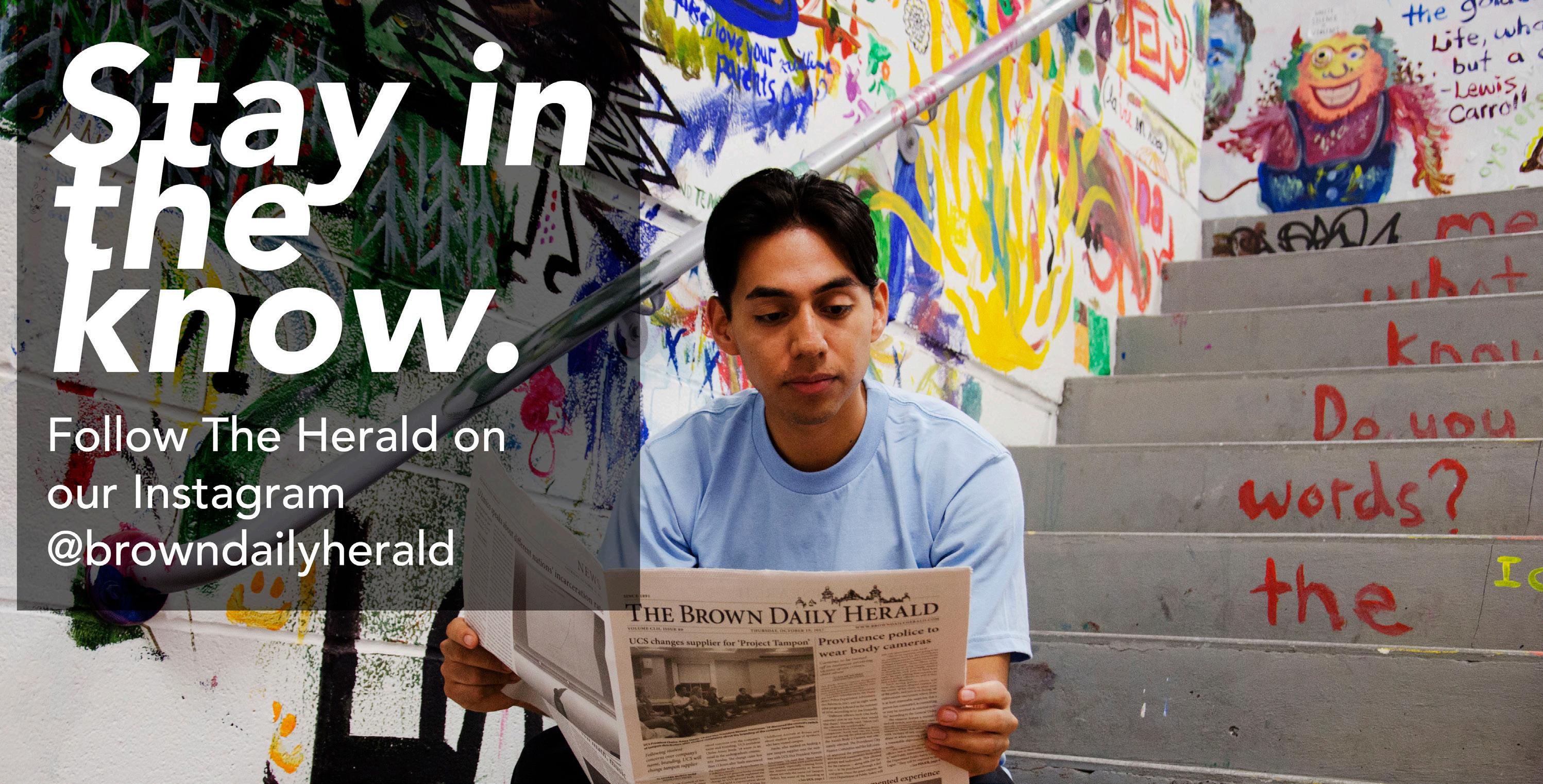
TODAY’S EVENTS
Interview Prep with School of Public Health Professionals 12 to 12:55 p.m.
121 South Main St., Room 247
Joint Materials/Solid Mechanics Seminar 4 to 5 p.m.
Barus and Holley, Room 190
TOMORROW’S EVENTS
A Reading with Judith Keller 1 p.m.
190 Hope St., Room 103
Fluids Seminar: Michelle DiBen edetto, Washington 3 to 4 p.m.
Barus and Holley, Room 190
Statistics Seminar with Ryan Tibshirani, Ph.D. 12 to 1 p.m. Online only
Multiracial Community Care Paint Night 7 p.m.
Alumnae Hall, The Crystal Room
Brown University Men’s Ice Hockey vs Boston College 7 to 10 p.m.
Meehan Auditorium
“TILL” Film Screening 5:30 to 9:30 p.m.
Granoff Center for the Creative Arts, Auditorium
4 MONDAY, NOVEMBER 28, 2022 THE BROWN DAILY HERALD | COMMENTARY CALENDAR NOVEMBER S F Th W Tu M S 9 8 7 10 4 5 6 16 15 14 17 12 13 11 23 22 21 24 19 20 18 27 25 26 2 3 1 29 30 28
EDITORIAL


MONDAY, NOVEMBER 28, 2022 5 THE BROWN DAILY HERALD | PUZZLES Answers: Sensory Overload (Nov. 21) BY LILY COFFMAN PUZZLE CONTRIBUTOR CROSSWORD
1 S 2 W 3 A 4 N 5 S 6 V 7 R 8 A 9 I 10 T 11 O 12 E 13 E E N I E 14 I A N S 15 B E R T 16 S I G H T 17 S A N D S 18 O U N D S 19 U R L 20 U G G 21 R B F 22 I D E 23 A 24 G R E 25 Y 26 E B O 27 N 28 Y 29 T O R T 30 U G A 31 E 32 B O A R D S 33 I R E 34 U T E 35 T A L 36 S E N S 37 I B I L 38 I 39 T Y 40 A 41 N T 42 T H E 43 I N A 44 S O A 45 N 46 D S O 47 L E T P 48 A 49 S 50 S 51 F R I A R 52 P 53 R O V 54 E L I O 55 N S A 56 E O E 57 P N W 58 S 59 C R A T 60 C 61 H A N D 62 S 63 N I F F 64 R E E L 65 N I C E 66 A N N U L 67 A E D 68 A S H Y 69 P E E L Y often former 2020 of invalid or Pompeii Cod down? 15 Endearing term for 40 Extremely so, STAY UP-TO-DATE. FOLLOW US ON FACEBOOK. FACEBOOK.COM/BROWNDAILYHERALD
Lily Coffman
takes time and effort,” he wrote.
“For years, our medical school and public health faculty, many of whom are physician-scientists based in our affiliated hospitals, have said that hav ing three distinct research operations creates undue administrative burden that can at times discourage collabo ration that could lead to exciting new biomedical discoveries and benefits for communities,” President Christina Paxson P’19 said in the release.
With a combined unit receiving research grants, all researchers in volved can avoid the subcontracting process, Jain wrote. “By aligning re search from laboratory to clinical trials to outcomes at the population level, we will accelerate the process of ad vancing discoveries that enhance the
detection and treatment of diseases,” he added.

Combining the institutions’ individ ual strengths in research infrastructure, core facilities and specialized equip ment will also help the combined unit compete for larger funding opportuni ties, Hart wrote.

“By fortifying and streamlining our research efforts, I believe we will also be more competitive in recruiting and retaining the best and brightest fac ulty, staff and trainees in biomedical and health sciences,” Lifespan Interim President and CEO Arthur Sampson said in the release.
A joint executive council led by Jain will oversee the collaborative research, according to the release. The council will include representation from each institution.
And while Lifespan, CNE and Brown
will continue to support their research at previously established funding lev els, the University will also invest an additional $20 million to $25 million into the enterprise “once the agreement is fully operationalized,” according to the release.


The ARC marks the first of multiple phases to put the agreement into effect: In the coming 12 to 18 months, the council will need to approve financial and operational plans, according to the release. Those plans will cover topics such as research integrity and com pliance, use of research facilities and staffing new positions.
“We are confident that from here, we can move forward with operation alizing the plan and putting it into practice,” said James Fanale, CEO and president of Care New England, in the release.
MONDAY, NOVEMBER 28, 2022 THE BROWN DAILY HERALD | NEWS The Brown Daily Herald, Inc. is a financially independent, nonprofit media organization bringing you The Brown Daily Herald and Post- Magazine. The Brown Daily Herald has served the Brown University community daily since 1891. It is published Monday through Friday during the academic year, excluding vacations, once during Commencement and once during Orientation by The Brown Daily Herald, Inc. Single copy free for each member of the community. Subscription prices: $200 one year daily, $100 one semester daily. Copyright 2022 by The Brown Daily Herald, Inc. All rights reserved. Submissions: The Brown Daily Herald publishes submissions in the form of op-eds and letters to the editor. Op-eds are typically between 750 and 1000 words, though we will consider submissions between 500 and 1200 words. Letters to the editor should be around 250 words. While letters to the editor respond to an article or column that has appeared in The Herald, op-eds usually prompt new discussions on campus or frame new arguments about current discourse. All submissions to The Herald cannot have been previously published elsewhere (in print or online — including personal blogs and social media), and they must be exclusive to The Herald.
must include no more than two individual authors. If there are more than two original authors, The Herald can acknowledge the authors in a statement at the end of the letter or oped, but the byline can only include up to two names. The Herald will not publish submissions authored by groups. The Herald does
your
submit op-eds to opinions@browndailyherald.com and letters to letters@browndailyherald.
When you email your submission, please include (1) your full name, (2) an evening or mobile
case your submission
for publication and (3) any
with
any
relevant
content
your
in submissions at least 24 hours in advance of your desired publication date. The Herald only publishes submissions while it is in print. The Herald reserves the right to edit all submissions. If your piece is considered for publication, an editor will contact you to discuss potential changes to your submission. Commentary: The editorial is the majority opinion of the editorial page board of The Brown Daily Herald. The editorial viewpoint does not necessarily reflect the views of The Brown Daily Herald, Inc. Columns, letters and comics reflect the opinions of their authors only. Corrections: The Brown Daily Herald is committed to providing the Brown University community with the most accurate information possible. Corrections may be submitted up to seven calendar days after publication. Periodicals postage paid at Providence, R.I. Postmaster: Please send corrections to P.O. Box 2538, Providence, RI 02906. Advertising: The Brown Daily Herald, Inc. reserves the right to accept or decline any advertisement at its discretion. 6 88 Benevolent, Providence, RI (401) 351-3372 www.browndailyherald.com Editorial: herald@browndailyherald.com Advertising: advertising@browndailyherald.com THE BROWN DAILY HERALD SINCE 1891 @the_herald facebook.com/browndailyherald @browndailyherald @browndailyherald 132nd Editorial Board Editor-in-Chief Ben Glickman Managing Editors Benjamin Pollard Caelyn Pender Senior Editors Katie Chen Gaya Gupta Jack Walker post-magazine Editor-in-Chief Kyoko Leaman News Metro Editors Emma Gardner Ashley Guo Oliver Kneen Katy Pickens Sameer Sinha Science & Research Editors Kathleen Meininger Gabriella Vulakh Arts & Culture Editors Rebecca Carcieri Laura David Aalia Jagwani Sports Editor Peter Swope University News Editors Emily Faulhaber Will Kubzansky Caleb Lazar Alex Nadirashvili Stella Olken-Hunt Shilpa Sajja Kaitlyn Torres Digital News Director of Technology Jed Fox Opinions Editorial Page Board Editor Johnny Ren Head Opinions Editor Augustus Bayard Opinions Editor Anika Bahl Bliss Han Melissa Liu Jackson McGough Alissa Simon Multimedia Illustration Chief Ashley Choi Photo Chiefs Danielle Emerson Julia Grossman Photo Editors Elsa Choi-Hausman Mathieu Greco Rocky Mattos-Canedo Dana Richie Social Media Chief Alejandro Ingkavet Social Media Editors Julian Beaudry Sahil Balani Kaiolena Tacazon Production Copy Desk Chief Lily Lustig Assistant Copy Desk Chief Brendan McMahon Design Chief Raphael Li Design Editors Sirine Benali Maddy Cherr Julia Grossman Gray Martens Neil Mehta Business General Managers Alexandra Cerda Sophie Silverman Andrew Willwerth Sales Directors Joe Belfield Alexander Zhou Finance Director Eli Pullaro RESEARCH
PAGE 1
Submissions
not publish anonymous submissions. If you feel your circumstances prevent you from submitting an op-ed or letter with your name, please email herald@ browndailyherald.com to explain
situation. You can
com.
phone number in
is chosen
affiliation
Brown University or
institution or organization
to the
of
submission. Please send
FROM
ASHLEY CHOI / HERALD
and coaches would just come up to me and ask, ‘oh, when are you going to switch to softball,’ as if it was this … inevitable thing that must happen because of biological differences,” she said. “But I always knew that it was gonna be baseball.”
Pichardo has amassed an extensive resume in recent years. She was invit ed in 2018, 2019 and 2021 to partici pate in the MLB Breakthrough Series, a program established for developing and showcasing young players, ac cording to MLB.com. In July 2021, she participated in the New Balance Baseball Future Stars Series National Combine.
She was also a part of the 2019 MLB GRIT Girls Invitational, an event that took place at the old Globe Life Park in Arlington, T.X. before its renovation. “That was (a) very cool experience, to see what the mound feels like,” Pich ardo said. “It’s the perfect ratio of clay and silt and dirt.”
In July 2022, Pichardo played with the USA Baseball Women’s National Team as both a pitcher and outfielder in the Friendship Series against Cana da in Thunder Bay, Ontario. It was on Team USA that she got to start in the outfield alongside Kelsie Whitmore, one of her longtime idols who recently became the first woman to play in the Atlantic League.
Pichardo also interned in the New York Mets Amateur Scouting Depart ment this past summer, where she got a behind-the-scenes look at player evaluation leading up to the MLB Draft and became familiar with programs like Synergy, a data analysis and visualiza tion tool for baseball.
A lifelong Mets fan, Pichardo threw out a ceremonial first pitch on Women’s Day last August at Citi Field, where she had gone to watch games for years. “I was so nervous,” she recalled. “I was shaking a little bit. (It was) a much bigger crowd than I expected it to be.”
If ‘she can ball, we’ll take her’
By the time she was throwing her first pitch from the Citi Field mound, Pichardo had been in contact with Brown’s coaching staff for about a year. After being admitted to Brown last spring, she and Head Coach Grant Achilles engaged in more in-depth conversations before Pichardo went through the walk-on tryout process this fall.
Pichardo’s years of preparation ultimately paid off. In Brown’s press release, Achilles said Pichardo had “put together the most complete walk-on tryout I have seen from a player since becoming a head coach.”
“From the beginning, her poise, her preparation, all the way to her execu tion … (and) the way she carried herself and communicated, it was impressive for me,” he said in an interview with The Herald.
“I was telling myself all throughout the summer that I was going to make the team. I just kept repeating that in my head, staying optimistic and posi tive,” Pichardo said. “When I step onto the field, everything just calms down completely.”
“That morning, I was at the field early practicing with a couple of the coaches,” outfielder Derian Morphew ’23 said. “I was like, ‘Are y’all expecting anyone pretty good?’ and they (said), ‘There’s one player that we can see doing well.’”
The rest of her future teammates were first made aware of Pichardo at a meeting called in the press box later
that day.
“We were pretty excited … that someone like Liv was able to impress the coaches enough to make it to the roster,” Morphew said.
Other than a few players who had played with women on their team be fore, “it was kind of completely un charted territory for all of us,” said infielder Raymond Sass ’23.
It didn’t take long for Pichardo to begin impressing some of the other players.
At an early practice, Morphew asked Pichardo if she wanted to be his throw ing partner. “The first thing I noticed was (that) she had a really good arm. The backspin was pure. She could longtoss far. It really impressed me,” he said.
“She really can do it on all sides of the ball,” Sass said. “The one day she threw to live hitters … I got to face her. It’s impressive.”
At her first team practice, an in trasquad game in which pitchers were throwing low-90s fastballs, “the first pitch she saw, she swung at and was on time,” Achilles recalled. “That’s just a microcosm of how she approaches her daily life. … There’s no fear. There’s preparation, and then there’s ‘bring it on.’”
When the news of her making the roster was revealed to Pichardo in the Oct. 4 meeting, she was met with a round of applause from her teammates, as seen in a video released by Brown Athletics.
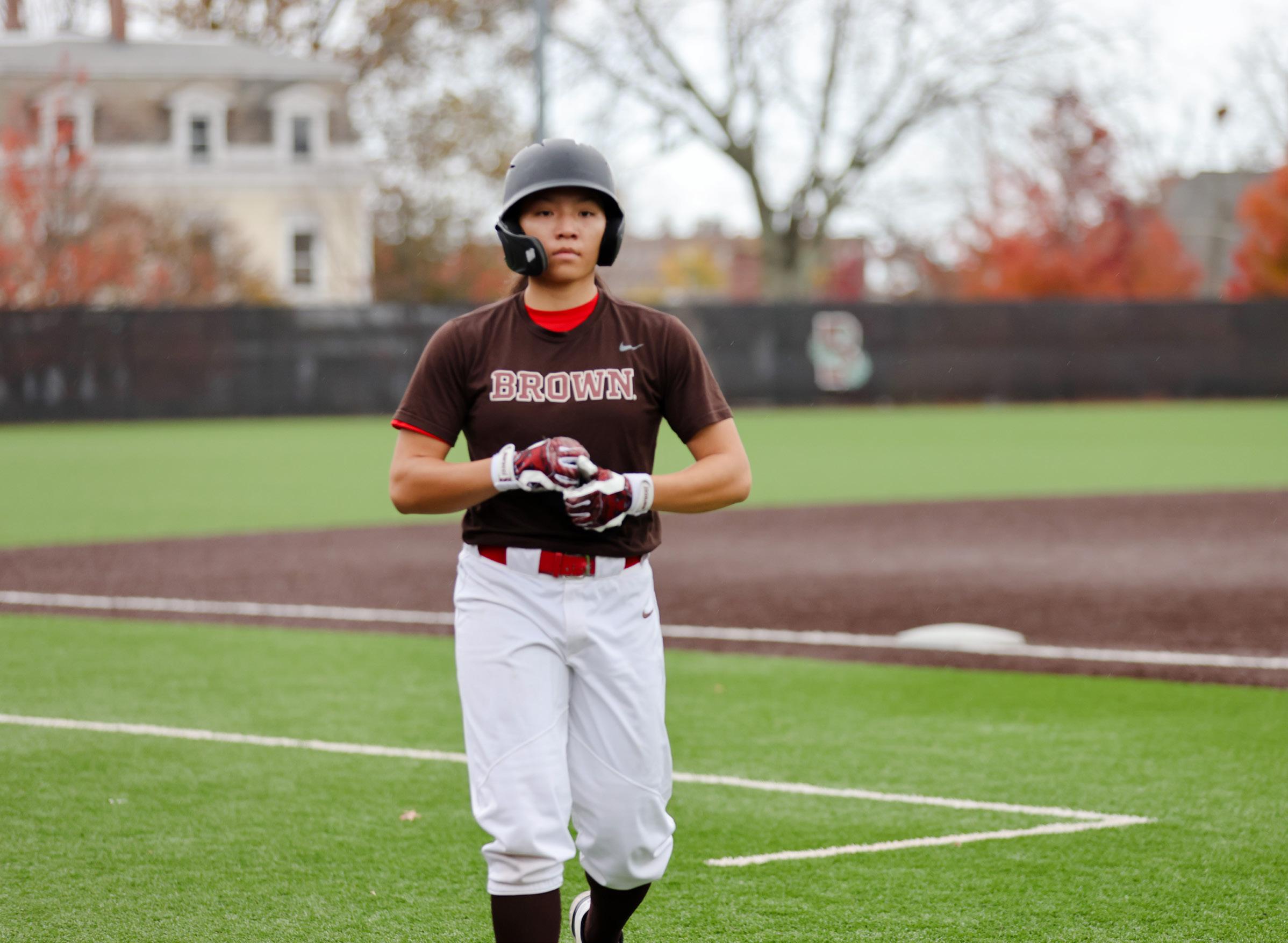
“They’ve welcomed Olivia,” Achil les said of the other players. “She did everything that she could to earn her spot in their eyes, and that happened because of who she is and the baseball player she is.”
“From the start, we really embraced her,” Morphew said. “Olivia is chasing her dreams, and of course, we wanted to do everything we could to support her (and) help her get better.”
Offering “little tweaks on mechanics or anything like that, as you would do with any other teammate, I think has made her feel like she’s welcome and she belongs on our team,” he added.
If “she can ball, we’ll take her,” Sass
said. “If she’s gonna make us better, no questions asked.”
Pichardo tried out as an outfield er, infielder and pitcher. Achilles said that her current position is “slated as a reserve outfielder,” though “a lot of things can change between now” and the start of the season.
On the offensive side, “I’m definite ly a ‘finding the gap’ kind of player,” Pichardo said. “I’m not going to be the player whose job is to hit home runs.” She also considers speed “a big part of my game.”
When asked for a Major League Baseball player comparison to Pichar do, Sass offered Cleveland Guardians outfielder Steven Kwan, a “slap-hitting, small ball left-handed hitter (and) good defensive outfielder.”
Pichardo called her style “pretty unique to me,” but noted her admira tion for recent New York Mets outfielder Brandon Nimmo, another contact hit ter who bats left-handed and throws right-handed. “He’s always hustling down that first base line, … even his home run trots are fast.”
Pichardo will have her first ingame opportunity with the Bears when the team travels over winter break to the Dominican Republic, where her family’s baseball journey began. Her father, a coach on her little league teams, grew up playing street ball with his friends in the D.R. before moving to the United States and set tling in the Bronx at age 12. Pichardo’s family will be accompanying her on the team trip.
‘Your life’s about to change’
“I’m definitely trying to be just present in the moment,” Pichardo said, describing her intention to stay locked in as the season approaches amid me dia coverage of her making the team. “I don’t want to let the moment get too big, because that might be over whelming.”
“She’s a college (first-year) trying to attain the highest level of amateur baseball at the Division I level and then trying to achieve in the classroom at one of the most challenging academic
institutions,” Achilles said. “Liv’s done a great job of just being in that moment, and being able to take a breath and enjoy where she is.”
Pichardo, who is leaning towards a concentration in the business track of economics, achieved a 5.2 GPA in high school while serving as student council president.
“I took a gamble with not playing college baseball. I had other collegiate offers lined up, but I just had to pick Brown,” Pichardo said.
In addition to the usual challeng es first-year student-athletes face in learning to balance their schoolwork with sports, Pichardo was not able to set her class schedule around practices at the start of the semester due her initial status as a walk-on, which coaches and players have helped her navigate.
“That’s one of the most impressive things to me,” Sass said. “She scooters down from class, gets there, gets her work in (and) even stays after some days to hit … making sure that, regardless of her busy school schedule and how it isn’t as cooperative with our baseball schedule, she’s still able to get every thing done.”
Pichardo has recently added media interviews to her schedule. Pichardo has spoken to MLB Network and NPR, and she has received a flood of messages and attention on social media.
“I remember … telling her, ‘hey, your life’s about to change,” said Associate Director of Athletics, Strategic Com munications and Content Creations Kelvin Queliz.
“It’s great to have this support sys tem around me,” Pichardo remarked. “A few of my teammates have reached out after the news broke and just told me that they’re in my corner no matter (if) anyone online might have something negative to say — that they’ll always have my back.”
Pichardo said that being featured on ESPN’s Instagram was a “big wow moment for me,” and she described seeing MLB and the Mets’ social me dia posts as “surreal.” She also noted her excitement at seeing athletes such as Billie Jean King supporting
her online.
Pichardo said she was still searching through her Instagram messages, mak ing sure to get back to each one from someone she followed, whether they were “former teammates” or “younger girls who I know from Baseball for All,” a nonprofit organization dedicated to gender equity in the sport where Pich ardo served as a mentor.
Though she recognizes her role as a trailblazer, Pichardo, along with team mates and coaches, was quick to em phasize that she is in this position due to her genuine passion for the game.
“I just have a love for the sport of baseball,” Pichardo said. “Just by me playing baseball, it by default makes me a pioneer whether I want it to or not.”
“It’s definitely a big motivator to work as hard as I can (and) get up in the morning to go lift without a prob lem, because I know that I’m working towards something,” she added. “It’s motivating … and inspiring for me to know that there are a lot of girls who may be looking up to me because I’m in this position.”
Still, the significance of the achievement is meaningful to Pichardo and those around her. When Pichardo makes her debut for Brown, whether in their season opener on Feb. 24 on the road against Georgia State University, their home opener on March 18 or at a later date, she will be setting a new bar for what is possible for women to achieve in baseball at the collegiate level.
“As a dad of two girls … whether or not they want to pursue baseball, I know they’re gonna have dreams,” Achilles said. “Being a part of someone realizing another dream and attaining another goal, it became even more real for me. I was flooded with emotion for Olivia.”
“Now that I’ve opened this door, these girls know that they can dream bigger and turn some of the dreams that they may have into more tangible goals,” Pichardo reflected. “A dream of mine was to play D1 baseball for a great academic school — and I’m here right now.”
MONDAY, NOVEMBER 28, 2022 7 THE BROWN DAILY HERALD | NEWS PICHARDO FROM PAGE 1
COURTESY OF BROWN ATHLETICS
Olivia Pichardo ’26 said she chose to attend Brown because of the University’s “academic philosophy of the Open Curriculum,” and is tentatively leaning toward concentrating in economics on the business track.
Metro Roundup: McKee funds additional shelter beds amid protests
BY EMMA GARDNER METRO EDITOR
McKee administration expands shel ter capacity
Governor Dan McKee announced the authorization of $1.4 million in spend ing to expand Rhode Island’s homeless shelter capacity by 77 beds, according to a Nov. 23 press release. The expansion will bring the number of shelter beds in Rhode Island to over 1,000, according to the release.
Additionally, the state Department of Housing is finalizing separate in centive-based plans that aim to add another 43 beds, the release noted.
“While the long-term solution to homelessness is to build more perma nent supportive housing units across the state, increasing shelter bed ca pacity is an immediate necessity for Rhode Island’s current situation,” R.I. Secretary of Housing Josh Saal ’09 said in the release. “Our goal is to work with our provider partners to swiftly get these newly funded beds online, while we continue … investing in programs and initiatives to prevent homelessness, and when not possible, make it rare, brief and non-recurring.”
The announcement followed a Nov. 21 rally in which dozens of ad vocates and individuals experiencing homelessness demonstrated outside the State House to demand 500 new beds, The Boston Globe reported.
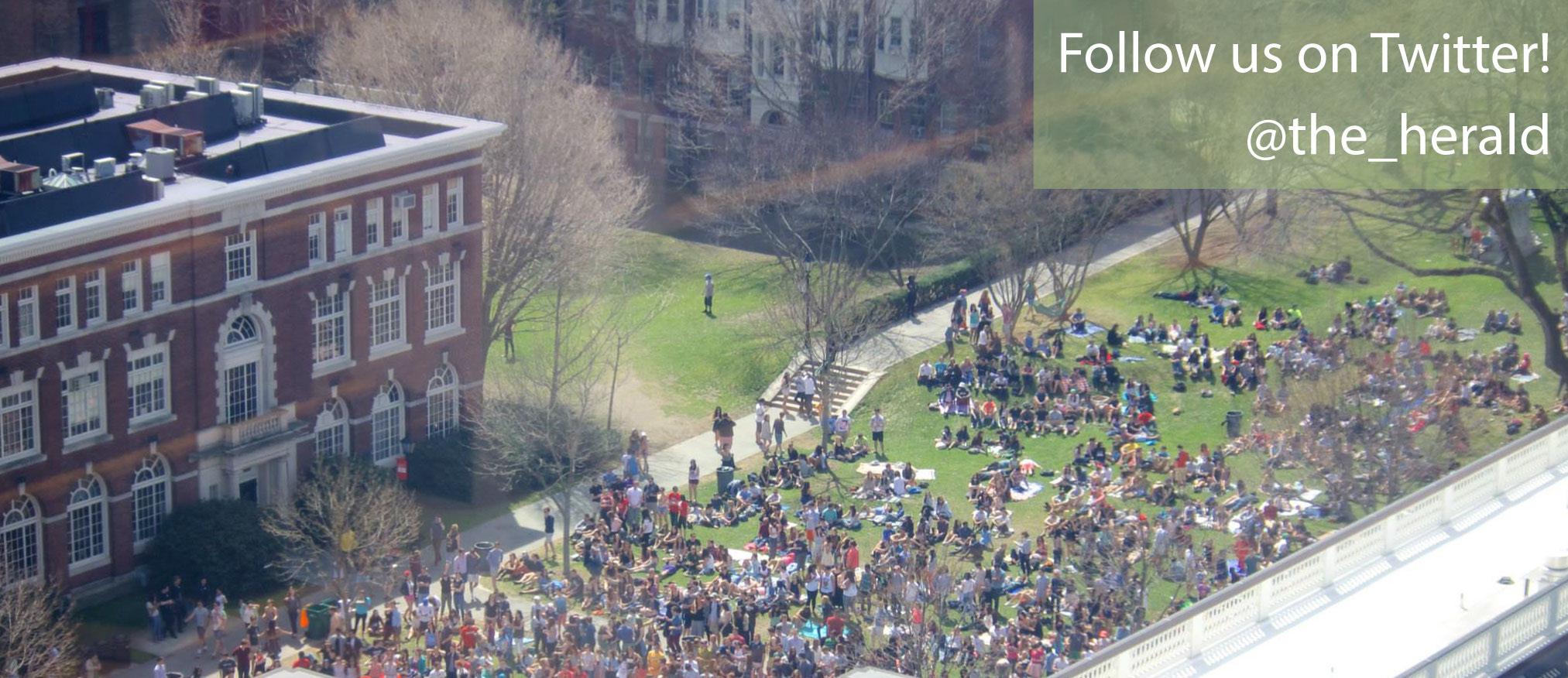
Demand for beds currently outstrips shelter capacity, even with the new ly-announced beds bringing the total number over 1,000: As of Nov. 3, 1,339 people are experiencing homelessness in Rhode Island, with 507 people liv ing outdoors and 729 people waiting for a shelter bed, according to data from the Rhode Island Coalition to End Homelessness.
Federal money to fund broadband development plans
The Biden administration has granted the Ocean State $5.5 million to develop a plan to expand the state’s
high-speed internet capacity, accord ing to a Nov. 22 press release from the Department of Commerce.
The funding comes as a result of the Infrastructure Investment and Jobs Act, also known as the Bipartisan Infrastruc ture Law, which was signed into law by President Joe Biden last year. The IIJA appropriates $65 million in federal spending for broadband development nationwide, according to the release.
This grant will allow Rhode Island to “plan for the deployment and adoption of affordable, equitable and reliable high-speed internet throughout the state,” according to the press release.
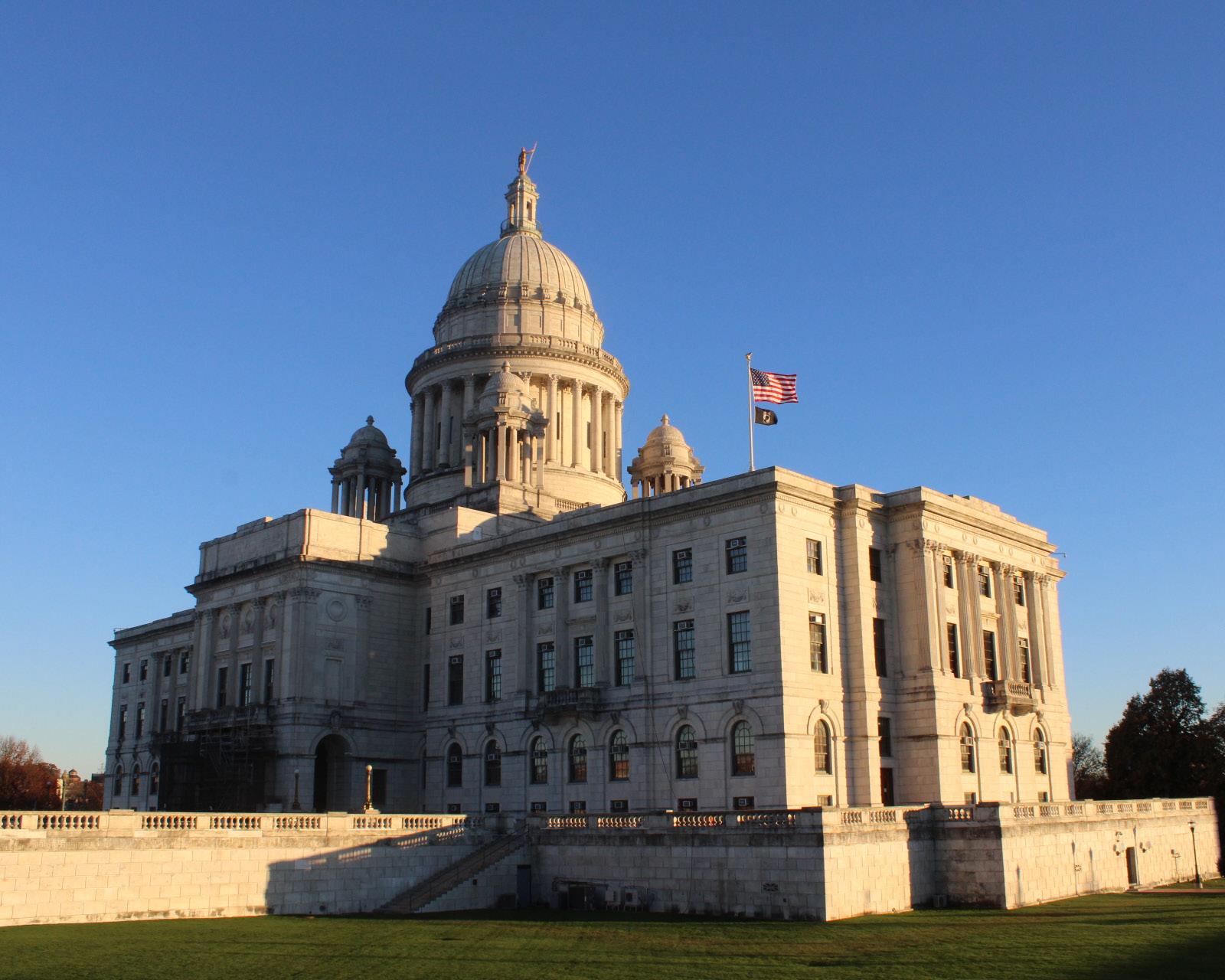
U.S. Secretary of Commerce and former Rhode Island Governor Gina Raimondo characterized the funds as an important “first step” in providing
equitable internet access throughout the Ocean State. “This money will al low the state to conduct the important planning and digital equity work vital to making this program a success,” she said in the press release.
Rhode Island’s broadband infra structure is underdeveloped in many areas, according to a January report from Connect Greater Newport, a de velopment-focused division of the Newport Chamber of Commerce. The report found that 42% of the populat ed area of Rhode Island is unserved or underserved in terms of internet access, meaning that “134,000 house holds and small businesses do not have access to broadband that meets the federal definition of ‘served.’ ” According to the report, the federal
definition of “served” means down load and upload “speeds equal to or above 100 Mbps down and 20 Mbps up.”
Bishop Henning to succeed Tobin as leader of Providence diocese Pope Francis has appointed Rich ard Henning to succeed Thomas To bin, the current bishop of the Cath olic Diocese of Providence, ahead of Tobin’s anticipated exit in the spring. Henning, who is currently auxiliary bishop of a diocese that covers most of Long Island, N.Y., will serve alongside Tobin as a coadjutor bishop starting in January, according to the Providence Journal.
The Diocese of Providence covers the entirety of Rhode Island, which is
over 40% Catholic, according to 2017 data.
Tobin’s retirement is the result of a Church rule which requires that bishops resign when they turn 75, a milestone that will come for Tobin on April 1 of next year.
Tobin has garnered national at tention for his outspoken socially conservative stances — especially his opposition to abortion and LGBTQ+ rights — as leader of Rhode Island’s Catholic Church, according to the Jour nal. Henning did not explicitly echo Tobin’s conservative views at a Nov. 23 press conference, declaring that he does not differ from Pope Francis — who has expressed support for same-sex civil unions — on doctrinal issues, the Journal reported.
MONDAY, NOVEMBER 28, 2022 8 THE BROWN DAILY HERALD | NEWS
METRO
Plus: Federal funds for high-speed internet, new Diocese of Providence bishop
MATHIEU GRECO / HERALD
Dozens of advocates gathered outside the State House on Nov. 21 to demand 500 new beds in state homeless shelters. Even including the 77 new beds McKee announced funding for, demand for beds currently outstrips capacity in Rhode Island shelters.


















